 “In other words, it didn’t matter that the failing banks didn’t pee in the pool, other banks did. And in banking, like life, the notion of a peeing and a non-peeing section in a swimming pool is meaningless.” – Paul Kedrosky
“In other words, it didn’t matter that the failing banks didn’t pee in the pool, other banks did. And in banking, like life, the notion of a peeing and a non-peeing section in a swimming pool is meaningless.” – Paul Kedrosky
If you didn’t already know that Paul Kedrosky was NOT a graduate of the Chicago School of Economics, you’d know after reading the above quote. The Chicago School has never been known for its humor or sense of irony. It became not just a department but a school of thought – where free markets had all the right answers, equations trumped people, and regulations were for wussies.
When I had my mid-life crisis and decided to go to graduate school, I wanted to study economics and finance. But so many schools had become Chicago School cults, focused on mathematical gymnastics whereby a hypothetical self-interested individual always got his way. I wanted to know what worked and what didn’t in the economy and financial markets – the economy that real people lived in and the markets that had started to command more and more of our economic activity.
I wrangled a transfer with IBM to Austin and started at the LBJ School of Public Affairs – first part time and then full time. Along with the requisite books on theory, I had the pleasure of being exposed to these books. And after reading them, I never looked at regulation the same way:
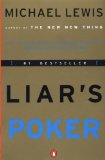 Liar’s Poker: Rising Through the Wreckage on Wall Street
Liar’s Poker: Rising Through the Wreckage on Wall Street: Michael Lewis tracks the ridiculous rise and eventual tumble of Salmon Brothers after the deregulation that allowed mortgages to be repackaged as bonds. His is a fascinating account of the culture of “big swinging dicks,” who made ungodly sums of money by betting big in a world seemingly without downside – where the only perceived penalty was levied on those who didn’t take on unconscionable risks. Lewis also wrote a nice follow-up piece during our recent market carnage called “The End,” which can be found here.
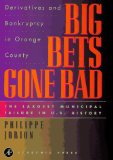 Big Bets Gone Bad: Derivatives and Bankruptcy in Orange County. The Largest Municipal Failure in U.S. History
Big Bets Gone Bad: Derivatives and Bankruptcy in Orange County. The Largest Municipal Failure in U.S. History: Philip Jorion goes through the step-by-step process of how California’s Orange County lost $1.7 billion in a highly leveraged gambit on repurchase agreements and structured notes. This doesn’t have the Bonfire of the Vanities feel of Liar’s Poker. There are no Rolls Royces or larger-than-life personalities. It’s an almost mundane case of poor oversight and regulation, albeit with a horrific price tag. It’s precisely because this happens in the absence of personal gain and a risk-hungry culture that makes it a noteworthy read.
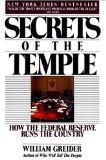 Secrets of the Temple: How the Federal Reserve Runs the Country
Secrets of the Temple: How the Federal Reserve Runs the Country: Although written in 1988, this book is of paramount importance now. In his somewhat daunting 700+ pages, William Greider looks at one of the most powerful, unregulated, political and financial institutions in America. Unfortunately, using the cover of today’s financial crisis, the Federal Reserve is grabbing even more power and devising even more excuses for its veiled secrecy — much like the administrative branch of the government did post-9/11.
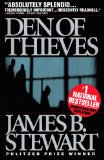 Den of Thieves
Den of Thieves: “Because everyone else is doing it,” isn’t just the rationale of the morally weak – it’s a signal that your regulatory framework is in danger. Once there is a perception that a playing field is no longer level – those that arrogantly break the law are gaining while law abiders lose — breaking the law starts to disguise itself as the single best mechanism for survival. But as this starts to happen – as more and more people piss in the pool – you eventually reach a point where the only people swimming are the pissers. So fouled is the water that no reasonable person would risk taking a dip.
In James Stewart’s fascinating book, you get a feel for just how mind boggling the gains were back in the 1980s for insider traders. The lawless insider-trading culture embraced by Ivan Boesky, Michael Milken, Denis Levine, and Martin Siegel (and nurtured by the world’s biggest investment houses in the 1980s) was evidence of a regulatory framework under fire. If things hadn’t ended badly for our subjects, mom and pop would have been long gone from the stock market by now. But that wasn’t the last we heard of the “because everyone else is doing it” mantra. As the subprime mortage business swelled, repackaged as “safe” investments with a shell game of credit default swaps, banks started to feel like they were at a disavantage if they didn’t start pissing in the pool.
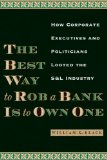 The Best Way to Rob a Bank Is to Own One: How Corporate Executives and Politicians Looted the S&L Industry
The Best Way to Rob a Bank Is to Own One: How Corporate Executives and Politicians Looted the S&L Industry: Charles Keating, who served time for his role in the S&L scandal wrote, “…get Black …Kill him dead.” Happily, Bill Black dodged death to teach my class in Financial Risk Management and is now an Associate Professor of Economics and Law at the University of Missouri. Black does more dish up the gory details of the fraud that he witnessed and prosecuted as a senior bank regulator during the S&L scandal. He offers up his ideas about why control fraud happens and, perhaps more importantly, why it is a continuing threat to financial markets. And even if you read the book, you should check out this video about why Black thinks the handling of our current banking crisis is patently wrong.
Bill Black may have a point. In the latest round of banking woes, the pissers weren’t penalized. In fact regulations were loosened, not strengthened. There isn’t a bank balance sheet I believe with the current “mark to market” rules.
But there’s one even more disturbing sign that convinces me that our banking regulatory framework is still in jeopardy: I’m starting to get 0% credit card offers again.
Note: Top picture is of David Cerny’s robotic statue “Piss”
One Comment